#harriet coleman
Text

Romance is Boring by Los Campesinos! is Aromantic and Transgender!
requested by @autismcicle
#request#album#romance is boring#aromantic#aro#trans#transgender#los campesinos!#tom bromley#gareth paisey#aleksandra berditchevskaia#harriet coleman#kim paisey#indie rock#noise pop#emo
57 notes
·
View notes
Text
Black Historical Figures I think are cool af!
Happy Black History Month! Below the cut you’ll find a list of 10 black historical figures I think are super cool (and often overlooked in favour of their white/non-black counterparts) all of the figures are inspirational to me in some way and I think anyone can learn from their examples, regardless of race.
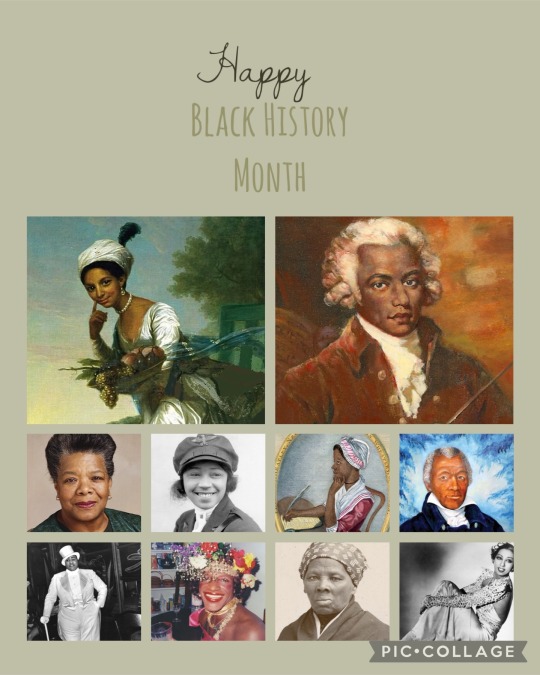
Dido Elizabeth Belle aka Dido Belle Lindsay - staying the course of your beliefs, knowing you deserve better. Knowing what’s right is more than possible.
Joseph Bologne, Chevalier de Saint-George(s) - don’t let anyone take your talents and passions from you. Those who treat you wrong don’t deserve you.
Phillis Weatly/Phyllis Weatly - no matter what you’ve been subjected to, don’t let anyone take your voice from you.
James Armistead Lafayette - fight (spy) for what you believe in. You may turn out to be the most powerful piece in the fight.
Harriet Tubman - no matter the evils of the world, there are good people out there, don’t forget your strengths and allies.
Freda Josephine Baker (née McDonald) best known simply as Josephine Baker - dance and keep dancing, no matter how bad things are. You only live once.
Bessie Coleman - pursue your dreams no matter who tells you that you can’t. You may match them in renown yet.
Gladys Bentley - wear what you want, speak how you want, and love whomever you choose.
Martha P. Johnson - be here, be queer, and speak truth to power.
Maya Angelou born Marguerite Annie Johnson - write, write, write, oh… and don’t fear life.
#meerathehistorian#black history month#black history month 2024#black history#queer history#black lives matter#dido elizabeth belle#joseph bologne#chevalier St Georges#history#phillis wheatley#american revolution#James Armistead Lafayette#harriet tubman#josephine baker#bessie coleman#gladys bentley#Martha p Johnson#maya angelou#queer#lgbtq+#bisexual#lesbian
50 notes
·
View notes
Text


By Rachel Hartigan
Published: 9 March 2023
The history of the first women who flew is a tale of breathtaking bravery and lives cut tragically short.
On 8 March 1910 — 113 years ago today — Raymonde de Laroche, a former Parisian stage actress, became the first licensed female pilot in the world.
Nine years later, she was killed when the experimental aircraft she was flying dove into the ground.
Harriet Quimby, a well-known journalist, became the first American woman to obtain a pilot’s license in 1911.
She died a year later when her new plane pitched her into Boston Harbor.
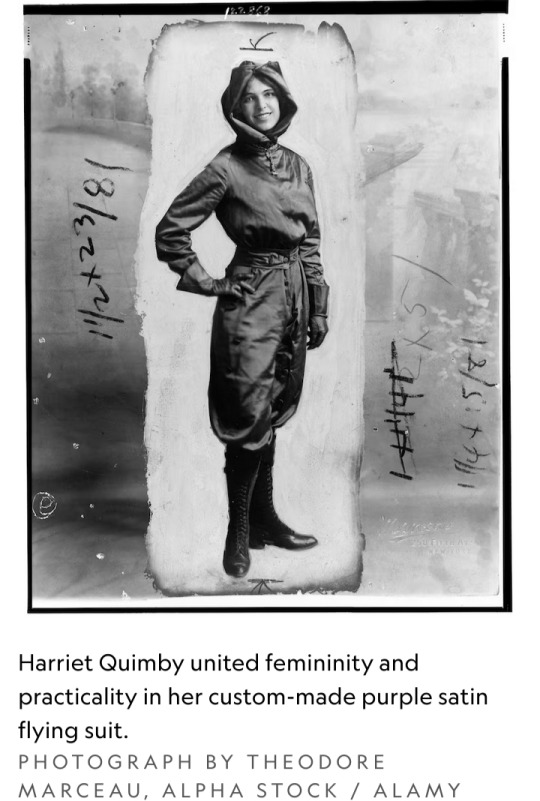
In 1921, Bessie Coleman was the first Black woman to receive a pilot’s license — she had to travel to France to find a flight school that would teach her.
But five years later, she was killed when a wrench got caught in her plane’s controls, sending the plane plummeting.

Flying was perilous in aviation’s earliest days.
"The planes were flimsy contraptions fashioned from bamboo, wire and fabric,” according to the late historian Eileen Lebow.
They didn’t have seat belts or even a roof to hold the pilot should the aircraft flip over.
Yet women like Laroche, Quimby and Coleman were willing to risk their lives for the freedom that flights promised.
“Aviation was a new profession seemingly free from the gender expectations and sex typing that limited women elsewhere,” noted historian Susan Ware at the National Air and Space Museum’s inaugural Amelia Earhart Lecture in Aviation History in 2022.
“Women were getting in at the beginning.”
For many of them, the thrill of flying was intoxicating but so was the opportunity to be assessed on their own merits.
“These women wanted to be judged as human beings rather than as women,” says Ware.
Coleman especially saw flight as a path toward broader gender and racial equality.
"I knew we had no aviators, neither men nor women, and I knew the Race needed to be represented along this most important line,” she said shortly after she returned to the United States from France in 1921.
“I thought it my duty to risk my life to learn aviating and to encourage flying among men and women of the Race who are so far behind.”
Before she died, she’d planned to open a flight school that would welcome African American aviators.
Many early women fliers shared the dream that achievement in this field would lead to more independence.
As one journalist and amateur pilot wrote in 1930, “A woman who can find fulfillment in the skies will never again need to live her life in some man’s spare moments.”

Some of that independence would come from the ease of travel that aviation promised in its earliest incarnation.
Many people, including Amelia Earhart, believed at first that airplanes would become as commonly owned by families as bicycles and automobiles already had.
Other women embraced the financial independence that they thought the new field would offer.
Neta Snook, whose first solo flight was in a plane she rebuilt, made her living by offering up her plane for aerial advertising, test flying experimental aircraft, taking paying passengers up for aerial tours, and teaching beginning fliers, including Earhart.
Gladys Roy, on the other hand, earned good money as a stunt pilot, dancing the Charleston and playing tennis on the wings midflight for amazed crowds at air shows.
(Snook retired from aviation when she became pregnant in her mid-twenties and lived to be 95; Roy died at 25 when she accidentally stepped into a propeller.)
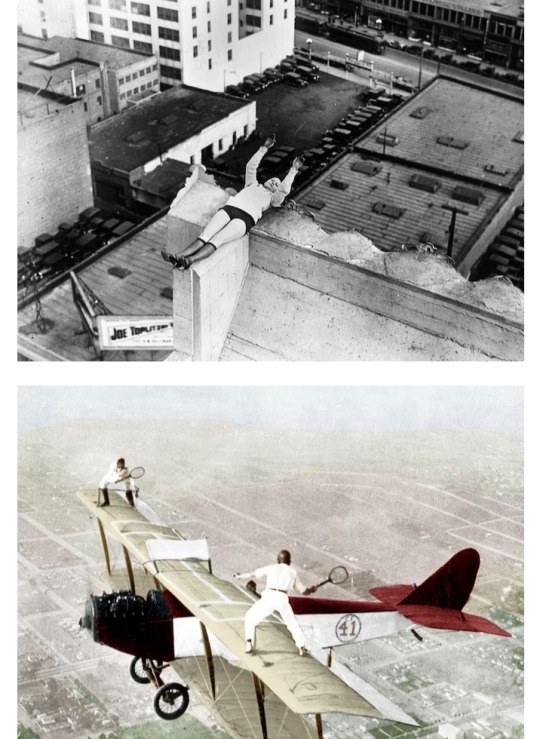

Sisters Katherine and Marjorie Stinson took a more long-term approach, establishing a flight school in Texas with their mother and brother that trained, among others, Canadian pilots in the run up to World War I.
When the U.S. entered the war, the country’s civil aviation — including the Stinson School for Flying — was shut down.
Katherine went to Europe to serve as an ambulance driver while Marjorie became an aeronautical draftsman for the Navy.
War and the development of commercial aviation conspired to dampen women’s hopes of equality in the air.
Experienced women pilots such as LaRoche and Katherine Stinson volunteered to serve in their countries’ nascent air forces during World War I.
They were denied, the military preferring to train unseasoned men.
The same pattern occurred in World War II, although Women’s Airforce Service Pilots (WASPs) did ferry U.S. military planes as civilian pilots during the conflict.
(The Soviet Union, however, had three female air combat regiments.)
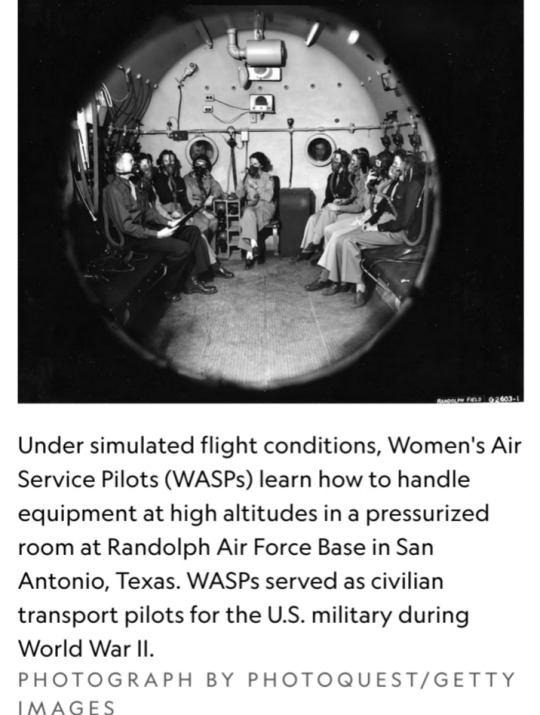
The dream of every family owning a private plane never did materialize; the infrastructure required would have been too extensive.
Instead, the commercial aviation industry developed, hiring men — many of whom had been trained as pilots by the military.
It was no use pointing out, as Earhart did, that "if women had access to the training and equipment men had we could certainly do as well."
Helen Richey became the first female commercial pilot in 1934 but was hounded out of her job.
The U.S. Commerce Department, under pressure from the all-male pilots’ union, decreed that women weren’t allowed to fly scheduled routes in bad weather.
(They’d previously considered “grounding female pilots for nine days a month during menstruation,” according to Ware).
There wouldn’t be another female commercial pilot until 1973, when Emily Howell Warner was hired by Frontier.
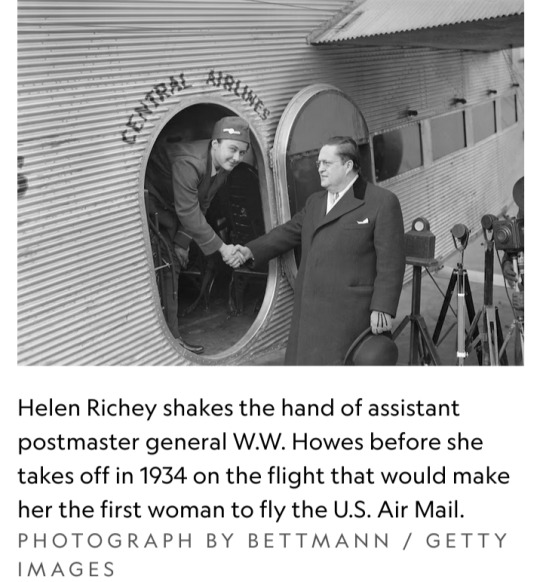
#Raymonde de Laroche#Harriet Quimby#Bessie Coleman#Eileen Lebow#Susan Ware#National Air and Space Museum#Amelia Earhart#Neta Snook#Gladys Roy#Katherine and Marjorie Stinson#Women’s Airforce Service Pilots (WASPs)#Helen Richey#Emily Howell Warner#female pilot#International Women's Day#International Women's Month#National Geographic#Nat Geo
50 notes
·
View notes
Text
me personally I don't care how unlikable and horrible a character is if I have decided that they will be my favourite I will ignore it all. hope this helps <3
#me#having....thoughts#cause like I always hear people say that they just COULDNT like this character after x or y and I'm like??? I would anyway idgaf#Ron weasley#Alex p keaton#Eddie simms#nick lang#dean taylor#Anna coleman#raven reyes#jasper jordan#Harriet duferenses#Amy delaney
9 notes
·
View notes
Text
The return of Green Wing! Follows on from The Special.
4 hours of new audio - hopefully it'll eventually become an actual show!!

#Green Wing#Green Wing Resucitated#caroline todd#tamsin grieg#mac#Mac MacCartney#julian rhind tutt#julian rhind-tutt#michelle gomez#sue white#mark heap#alan statham#olivia coleman#harriet schulenburg#martin dear#Karl Theobald#joanna clore#Pippa Haywood#oliver chris#boyce#stephen mangan#Guy Secretan
1 note
·
View note
Text

Humans are weird: Human War Machines
*Heavy radio static*
Alien: This is General Tenvala of the 73rd detachment calling to Terran Command!
*Explosions in background drown out radio*
Tenvala: Come in Terran Command!!!
Richard: This is General Richard Narsis of Terran Command; we read you General Tenvala.
Richard: What is your situation?
Tenvala: We are trapped along the Mantav range and are surrounded!
Tenvala: We request immediate support!
Richard: What is the enemy strength?
*More explosions over radio as Tenvala replies*
Richard: Repeat last. What is the enemy strength?
Tenvala: At least three legions of Mekari.
Tenvala: They circled around our positions in the night and trapped us.
Richard: Do they have any vehicle or air support?
Tenvala: The terrain is too difficult for them to bring in their vehicles, and we’ve not seen any fighters.
Tenvala: They have heavy portable weapons and are using long ranged artillery to hem us in.
*More explosions followed by screams of alien soldiers*
Tenvala: Send help now or we will be overrun!
Richard: We hear you loud and clear General.
*Cuts line for a moment to talk to tactical*
Richard: What’s the closest unit we have in the area?
Tactical: The 293rd is seven miles away, but they’re engaged in combat and can’t disengage without opening a hole in the line.
Tactical 2: The 33rd armor brigade has just finished repairs, but they won’t be able to navigate through the mountains and will most likely get ambushed.
Richard: Is that everything?!
Tactical 3: *Holds hand up for a moment while they listen to something*
Tactical 3: The crew of the Jubilant is reporting they can orbital drop and relieve the 73rd.
Richard: We can’t drop them into a mountain range; it’s never been done before.
*New voice over radio*
Harriet: We can handle it General.
Richard: Who is this?
Harriet: Pilot Harriet Coleman sir, pilot of the Jubilant.
Richard: You understand what you are asking me soldier?
Harriet: We do.
Richard: And that I can’t give you a guarantee when we can dispatch reinforcements?
Harriet: I’ve always loved a target rich environment all to myself.
Richard: *Chuckles*
Richard: Permission to deploy granted. Give’m hell.
*Switches line back to Tenvala*
Richard: We are deploying reinforcements to you now via orbital drop.
Tenvala: Thank the gods.
Tenvala: How many are coming?
Richard: We can only deploy one special weapons platform at this time.
Tenvala: Only ONE!!!!
Tenvala; Are you joking?
Richard: Trust me.
Richard: You’ll only need the one.
#humans are insane#humans are weird#humans are space oddities#humans are space orcs#scifi#story#writing#original writing#niqhtlord01#ai generated art
144 notes
·
View notes
Note
Good luck if you attempt this challenge! And what was your fastest run if you did multiple attempts? Or your favorite list?

Oh, I love women? I'll name you every woman.
Kwon Eunbi
Miyawaki Sakura
Kang Hyewon
Choi Yena
Lee Chaeyeon
Kim Chaewon
Kim Minju
Yabuki Nako
Honda Hitomi
Jo Yuri
An Yujin
Jang Wonyoung
Leni Robredo
Audrey Hepburn
Anne Hathaway
Cate Blanchett
President Gloria Macapagal Arroyo
Whang Od
Tandang Sora
Marilyn Monroe
Sydney Sweeney
Jenna Ortega
Zendaya Coleman
Megan thee Stallion
Taylor Swift
Naoi Rei
Harriet Tubman
Cleopatra
Eve
Maine Mendoza
Mikha Lim
Choi Yujin
Shen Xiaoting
Sakamoto Mashiro
Hikaru
Yeseo
Nicki Minaj
Ariana Grande
Dolly Parton
Lovelace
Huh Yunjin
Nakamura Kazuha
Sorry, this is all I can do. Took me under six minutes. I'm on a road trip and I need to pee and this is making me anxious lol happy Maundy Thursday to those who observe it love you
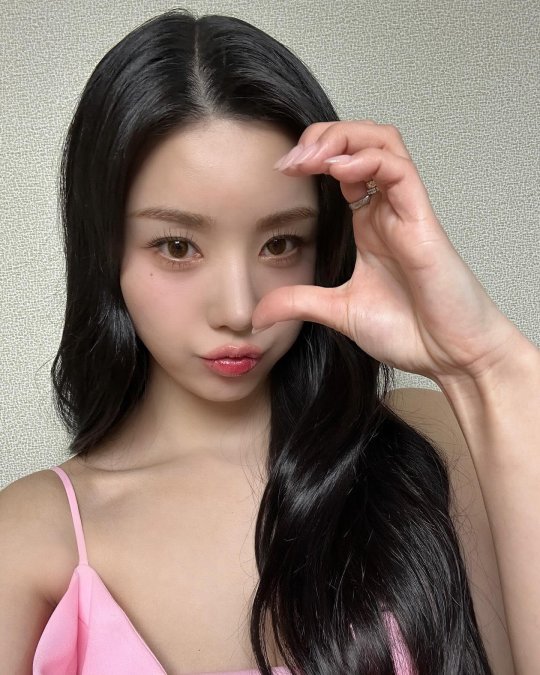
12 notes
·
View notes
Text
Here's my list of forgotten/cool women from history. Please take it, reblog it with more, spread it, learn about them, make books about them:
Lucy (slave used for experimentations on the uterus)
Nightwitches from WW2
Grace Hopper
Mary Anning
Maria Mitchell
Ada Lovelace
Kate Warne
Agnes Barre
Flora Tristan
Olympe de Gouges
Eleanor Roosevelt
Bessie Smith
Sylvia Plath
Sweet Tee
Lady D (the rapper)
The Sequence
Lady B
Rachel Carson
Baya
Tahireh
Lalla Fatma N'Soumer
Rosalind Franklin
Miriam Makeba
Alexandra David Néel
Suzanne Noël
Helena Rubinstein
Katherine Switzer
Jeanne Barret
Sophie Germain
Katherine Johnson
Margaret Hamilton
Hedy Lamarr
Betty Snyder Holberton
Kathleen McNulty Mauchly Antonelli
Marilyn Wescoff Meltzer
Frances Bilas Spence
Ruth Lichteman Teitelbaum og Jean Jennings Bartik
Valerie Thomas
Karen Sparck Jones
Dr Shirley Ann Jackson
Radia Perlman
Stacy Horn
Dr Betty Harris
Beulah Louise Henry
Elizabeth "Jake" Feinler
Empress Zenobia of the Palmyrene Empire
Surya Bonaly
Dolly Parton
Mary Wollstonecraft
Mary Shelley
Queen Nzinga of Ndongo Kingdom
Queen Yaa Asantewa Ashanti
Empress Candace of Ethiopia
Queen Sarraounia Mangou of Aznas Kingdom
Dona Beatriz
Mileva Marić
Matoaka
Janet Sobel
Claudette Colvin
Marsha P. Johnson
Marian Anderson
Madam CJ Walker
Frida Kahlo
Mirka Mora
Dahomey Amazons
The 40 Elephants
Diamond Alice
Maggie Bailey
Julie d'Aubigny
Bessie Coleman
Policarpa Salavarrieta
Annie Oakley
Anna Julia Cooper
Sojourner Truth
Ida B. Wells
Shirley Chisholm
Mary Church Terrell
Audre Lorde
Harriet Tubman
Maria W. Stewart
Angela Davis
Florynce Kennedy
Jocelyn Bell
Alice Ball
Lise Meitner
Chien Shiung Wu
Marie Tharp
Elizabeth Blackwell
Amanirenas
Wu Zetian
23 notes
·
View notes
Text
Black Femme Character Dependency Dark Skin Directory || Characters Masterlist Pr. 1 (A-J)
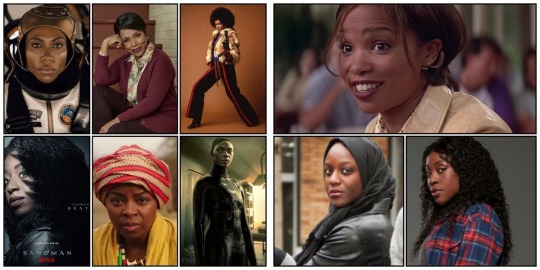
A
Abbie Mills | Adelaide Wilson/Red | Agent 355 | Agura Ibaden | Aleesha Morrison | Alexa Brandt | Alexandra Crane | Allison Sawyer | Amanda Stern | Amari Peters | Amber Bennett | Amie Sammuelson Conde | Amina Ramsey | Amy Bellafonte | Anaya Imanu | Angel Dynamite | Angela Abar | Angela Goddard | Angela Moore | Angela Vaughn | Anissa Pierce | Anita Fthe13th | Annalise Keating | Annie Keller | Annie Pearson | Antigone | Aphasia | April Sexton | Apocalypta | Arabella | Artemis | Ashley Banks | Ashley Collins | August King | Ava Coleman | Aya Al-Rashid | Ayo | Azima Kandie
B
Barbara Howard | Becca Palmerstone | Beckett Mariner | Becky | Becky Todd | Bella Crawford | Belle Newman | Betty | Billie the Reaper | Bilquis | Bisma | Blackfire | Bo | Bobbi | Bow Kid | Bree Matthews | Bumblebee
C
Caprice Winters | Carmen Eguiluz | Carol | Carol Lockhart | Carole Clarke | Catherine Halliday | Catty Noir | Celeste Bisme Lyons | Celie Johnson | Chantelle Blades | Charlotte Page | Cherise | Chondra Unkrich | Clash | Claudia Grant | Cleo Sowande | Cleopatra Jones | Cobra | Coffee | Cocoa Cookie | Coco Conners | Coco Monvoisin | Condola Hayes | Conny Spalding | Cressida | Cynthia Rose Adams
D
Daisy Grant | Damita | Dana Mythical Quest | Darli Dagger | Dayna Mellanby | Death of the Endless | Deja Pearson | Delilah Benson | Denise Hayworth | Denise Johnson | Diana Freeman | Doc McStuffins | Doctor Slone | Donna Siren | Donna Meagle
E
Ela | Elektra Abundance | Elena Felton | Ella McFair | Elzora | Enchantress | Erin Cortland | Esi Jiwe | Esther Hopkins | Ethel Peabody | Evangeline Williamson | Eve Doll
F
Fanta | Farah Black | Felicia | Foxxy Love | Fringilla Vigo
G
Genevieve Quik | Georgiana Lambe | Girl 6 | Grace Hitchens | Grace James | Grace Monroe | Grace Ryder | Grace Sienar | Grace Walker | Grandmother
H
Hailey Collins | Hallie McDaniel | Hanna Lovecraft | Hannah Grose | Hannah Steale | Harley Hidoko | Harper Bettencourt | Harriet Lennox | Harriet Tubman | Hattie Mitchell | Hazel Levesque | Henriette | Hippolyta Freeman | Holly | Honeybear | Hunter | Hunter B 15
I
Ikora Rey | Imane Bakhellal | Imani | Imani Izzi | Indra | Inquisitor Reva | Irene Federic | Iridessa | Iris Watkins | Ironheart | Isis
J
Jack Starbright | Janai | Jane Amphibia | Jane Hayward | Janie Egins | Janine Teagues | Jasmine TD | Jasmine Davis | Jean Peterson | Jennifer Sisko | Jenny Jackson | Jenny Pizza | Jessica Crashing | Jessica Williams | Jill TUA | Jinna | Joana Coelho | Joanna Crawford | Jodie Landon | Jojo Williams | Jolene | Jonelle Abraham | Jordan Armstrong | Jordan Moore | Josie McCoy | Juanita Benson | Judith | Julia Freeman | Juniper Andromeda | Justine Dancer
...
I ran out of time. LOL. I’ma work on it tho...
I got 2 jobs. Sometimes, I’m not gonna have the things I intend to bring.\
If anybody want me to tag them whenever I finish actually making this list, just leave it in the replies and I’ll tag everybody once I finish K-Z characters, hopefully before the month is over.
#BFCD Dark Skin December#Black Female Characters Masterlist#Black Female Characters#dark skinned beauty#Girl That's Queuedt#December#tags masterlist#BFCD Masterlist#neshatriumphs#blackfemmecharacterdependency#source: blackfemmecharacterdependency#List will be updated as needed#A-Z#BFCD DS Directory
45 notes
·
View notes
Text
I did (admittedly surface) level research on the possible grandchildren of Francis Henderson Jr. Whether or not they are his grandchildren, I think it’s still interesting to learn about and tomorrow or in the following days I’ll be posting something about Edward, his wife, and daughter, that I think is important to understanding the political climate of race in 1870s.
An 1870 census includes Edward (Francis’ possible son), a woman named Hattie, and two children: Mahala, five, and Anna, three. I assumed Hattie was Harriett, Edward’s wife, since she’s younger than Edward and thus not his mother Hattie McLaren. However, her birth year conflicts with a later census saying Harriett was born four years later, and I’m more inclined to believe that latter census. All four are described with an outdated term for mixed race.

An 1880 census includes Edward again, along with Harriett, his wife. Edward’s job his listed as a carpenter (although we already knew that) and Harriet is a seamstress. Also listed in the census is 75-year-old Hattie McLaren, Edward’s mother. She’s listed as a widow. Also included is Mahala, now a 14-year-old student. Unfortunately, Anna is not listed, but a two-year-old girl named Isabel, labelled Edward’s daughter, is. I couldn’t find any further sources for either Anna or Isabel. It says that Edward and Harriet cannot read or write. Again, everyone in the family is described as mixed race.

This where the sources for Edward stop, but Mahala’s continue. I’m not going to list all of the sources because there’s a lot, but I’ll list a census and give a rundown. She was married by 1888 to a man named Coleman Dunlap (b. 1860), and had seven sons (Edward (, James, Cecil, Ernest, Harold, and Jessie), and one daughter (Eunice). Sometime between 1898 and 1900, the family moved to Rhode Island. Interestingly, this is where Francis Henderson Sr, who would’ve been Mahala’s great-grandfather, lived. The 1900 census (listed below) also gives us some nice information such as Mahala’s birth year, 1865. Unlike previous census reports, where there were more descriptions for race, people are only labelled as white or black, with Mahala, her husband, and their children falling into the latter label. Coleman Dunlap would end up passing away sometime before 1930, as the 1930 census says she’s a widow living with her unmarried son Harold. They are labelled black. A 1935 census says that Mahala is able to read and/or write English, and that at some point in her life she suffered from Measles. Interestingly enough, she’s actually labelled white. The only labels were white, black (though it’s put as an outdated term), and other. In the 1940 census, she is still living with Harold, although this time Harold’s aunt is also living with them. Unlike the 1930 census, both Mahala and Harold are labelled white. The 1950 census includes Mahala, Harold, Harold’s aunt, and a lodger. This time, Mahala and Harold are labelled with an outdated term for black. Apparently, she died in 1960, but I haven’t found a proper source for this. If that’s true, she would’ve lived to an astonishing 96-years-old.

Later, I want to bring attention to a story in “Hurrah for Hampton!” I was going to include it here, but it complicated the post so I’ll try to get around to that tomorrow or in a few days. Whether or not Edward, Mahala, and the rest of their family are descendants of Francis Henderson Jr aside, I feel that this story is really important in seeing the brutality against people of color in the 1870s, especially when politics got in the way. Just giving the rundown, in it, Edward is threatened by a trial-justice with a pistol, his daughter Mahala, a ten-year-old, is whipped, and his wife Harriett was threatened with being whipped.
I don’t want to end this post on that note, so I’ll add a nice little fact I found. Mahala’s only daughter, Eunice, died at 20/21 in 1915. Later that year, Mahala’s oldest son Edward had his first daughter, and he named her Eunice. I thought that was bittersweet. This also brings up that, again if Edward was Francis’ son, there are descendants of John Laurens still alive today.
#Francis Henderson#Francis Henderson Jr#Francis Henderson Sr#historical john laurens#John Laurens#frances laurens#Frances Eleanor Laurens
18 notes
·
View notes
Text
Hey friends!
I've had this HC about my beloved Pilot™️ forever a while, dying for someone to ask, as if anyone would ever think of asking something like that, until I realised it's my blog and I can post it if I please! And it gives me immense pleasure to do so (I don't need much...)
So here's a peek at what my Frankie's high school locker looked like 😍
They're his role models. The man really looks up to a strong headed, driven female aeronautical pioneer, flying against all odds...

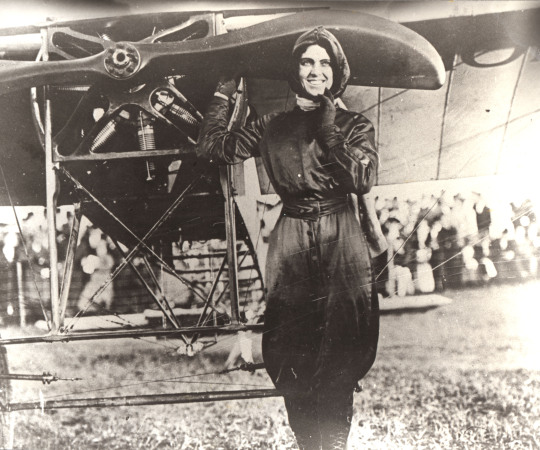






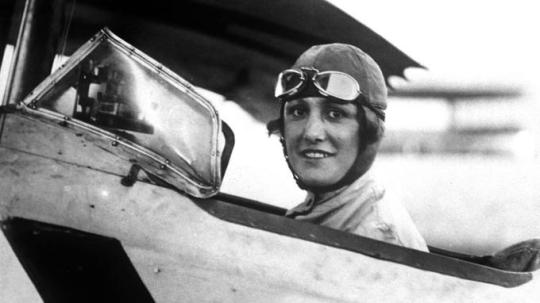



Adrienne Bolland (France, 1895-1975, his favourite), Harriet Quimby (USA, 1875-1912) Amelia Earheart (USA, 1897-1939), Amy Johnson (UK, 1903-1941), Bessie Coleman (USA, 1892-1926), Hélène Boucher (France, 1908-1934), Jacqueline Auriol (1917-2000), Margot Duhalde Sotomayor (Chili, 1920-2018), Maryse Bastié (France, 1898-1952), Mona Friedlander (UK, 1914-1993), Elizabeth L. Gardner (USA, 1921-2011), Nancy Harkness Love (USA, 1914-1976)
15 notes
·
View notes
Text

Romance is Boring by Los Campesinos! is Aromantic and Trans Masc!
#request#album#romance is boring#aro#aromantic#transgender#trans#transmasculine#trans masc#los campesinos!#Gareth Paisey#Neil Beale#Tom Bromley#Kim Paisey#Rob Taylor#Jason Adelinia#Harriet Coleman#Ellen Waddell#indie pop#indie rock#noise pop
51 notes
·
View notes
Photo

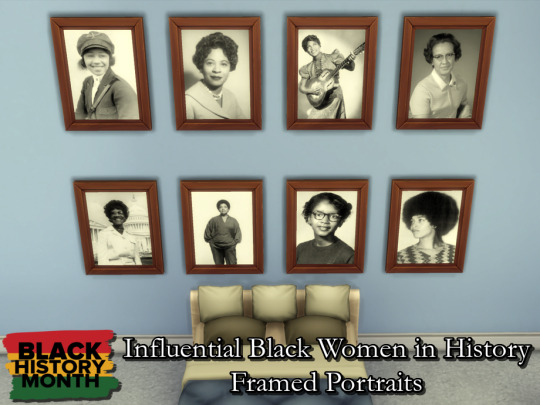

Influential Black Women in History Framed Portraits
Black History Month Special. Set of framed portraits featuring just a handful of amazing influential Black women throughout history.
I was inspired to make this after watching The Watcher’s Puppet History episode on Bessie Coleman. Watch it for yourself here.
I was both angry and sad that I had never heard of this woman at all - ever. So I decided to make this portrait set featuring Black women who did extraordinary things that I don’t think the majority of people have ever heard of. This is why I didn’t include more well-known figures such as Harriet Tubman, Rosa Parks, Coretta Scott King, or Michelle Obama - everybody knows who they are and I wanted to broadened everyone’s knowledge just as mine was when I did my research. The only woman here that I knew of was Marsha P. Johnson.
Here’s a list of the women in these portraits:
Phillis Wheatley (1753 - 1784)
Fannie Barrier Williams (1855 - 1944)
Maria 'Molly' Baldwin (1856 - 1922)
Lillian Parker Thomas (1866 - 1917)
Madam C.J. Walker (1867 - 1919)
Mary McLeod Bethune (1875 - 1955)
Nannie Helen Burroughs (1879 - 1961)
Lyda D. Newman (about 1885 - unknown)
Bessie Coleman (1892-1926)
Daisy Bates (1914 - 1999)
Sister Rosetta Tharpe (1915 - 1973)
Katherine Johnson (1918 - 2020)
Shirley Chisholm (1924 - 2005)
Audre Lorde (1934 - 1992)
Claudette Colvin (1939 - present)
Angela Davis (1944 - present)
Marsha P. Johnson (1945 - 1992)
Mae Jemison (1956 - present)
To learn more about these women, click the “Keep Reading” below.
18 swatches available
base game compatible
please read and respect my Terms of Use
DOWNLOAD HERE (SimFileShare)
Phillis Wheatley (1753 - 1784)
Taken from her native Gambia, she was brought to Boston in the mid-18th century and enslaved to the family of John Wheatley as a domestic. Aware of her intelligence, the Wheatley's taught her how to read and write. She eventually became a well-known poet in both New England and England, with her work "An Elegiac Poem, on the Death of that Celebrated Divine, and Eminent Servant of Jesus Christ, the Reverend and Learned George Whitefield," celebrated on both sides of the Atlantic. (Chicago Tribune)
Fannie Barrier Williams (1855 - 1944)
She was an influential educator and activist who was a staunch advocate for freed slaves in the South. She spoke at the World's Columbian Exposition in Chicago in 1893, expressing her concern over the lack of Blacks on the Board of Control for that cultural event. She helped found organizations such as the National League of Colored Women, the National Association of Colored Women, and the National Association for the Advancement of Colored People. She also supported women's suffrage and in 1907, was the only African-American chosen to eulogize Susan B. Anthony at the 1907 National American Women Suffrage Association convention. (Chicago Tribune)
Maria 'Molly' Baldwin (1856 - 1922)
She was a teacher and civic leader in Cambridge, Massachusetts. She became master of the Agassiz School, a public school for middle-class white children, in 1916. She was one of only two women masters in Cambridge schools and the only African-American in New England with that distinction. During Baldwin's tenure, the Agassiz School was considered one of the best in Cambridge. The 12 teachers who served under her were all white. (Chicago Tribune)
Lillian Parker Thomas (1866 - 1917)
She gained a reputation as an effective collaborator and organizer while working as a journalist for the Indianapolis News, where she was the first African-American to write a regular column. Thomas used her contacts and influence at the newspaper to further the cause of racial equality. She was also involved in the founding of the Woman's Improvement Club, which helped African-Americans get health care. (Chicago Tribune)
Madam C.J. Walker (1867 - 1919)
Before Mary Kay, there was Madam C.J. Walker. Walker is widely regarded as one of the first ever self-made American female millionaires. She created hair-care solutions and remedies with Black women in mind and sold them door-to-door. She eventually created a brand people recognized, widely manufactured her products, and hired 40,000 ambassadors since the company's inception to help her sell her products. (Teen Vogue)
Mary McLeod Bethune (1875 - 1955)
After struggling to go to school and working on a plantation to help support her family, she became an educator and, in 1904, founded the Daytona Educational and Industrial Institute for Girls. Her educational activism and leadership set her up to be a political activist. She went on to found the National Council of Negro Women, and worked in Franklin D. Roosevelt's administration, where she served as the informal "race leader at large." (Teen Vogue)
Nannie Helen Burroughs (1879 - 1961)
Born to former slaves in Virginia, she was a leading educator, feminist, and suffragist in the Washington, D.C., area. After she was rebuffed for a teaching job in the Washington, D.C., school system, Burroughs founded a school for girls and women, the National Training School for Women and Girls, in 1909. She served as the school's president until her death in 1961. (Chicago Tribune)
Lyda D. Newman (about 1885 - unknown)
She gravitated toward a career involving the hair-care industry. Newman got a patent for her invention, the first synthetic hairbrush, in 1898. Her innovation allowed for easier access to the bristles in order to clean out the brush. In addition, she introduced synthetic bristles. Before her invention, brushes used animal hair, such as a boar’s. Her invention made brushing long locks a more hygienic process. (Teen Vogue)
Bessie Coleman (1892 - 1926)
She was the first African-American woman and first Native American to hold a pilot license and was the first Black person to earn an international pilot's license. She then became a high-profile pilot doing notoriously dangerous air shows in the United States. She was popularly known as “Queen Bess” and “Brave Bessie”, and hoped to start a school for African-American fliers. Her pioneering role was an inspiration to early pilots and to the African-American and Native American communities. (Wikipedia)
Daisy Bates (1914 - 1999)
She an American civil rights activist, publisher, journalist, and lecturer who played a leading role in the Little Rock Integration Crisis of 1957. As the leader of the NAACP branch in Arkansas, Bates guided and advised the nine students, known as the Little Rock Nine, when they attempted to enroll in 1957 at Little Rock Central High School, a previously all-white institution. (PBS)
Sister Rosetta Tharpe (1915 - 1973)
She is one of the most influential artists of the 20th century. Her flamboyance, skill, and showmanship on the newly electrified guitar played a vital role in the conception of Rock & Roll as a genre of music. She gained popularity in the 1930s and 1940s with her gospel recordings, characterized by a unique mixture
of spiritual lyrics and electric guitar. She was the first great recording star of gospel music, and was among the first gospel musicians to appeal to rhythm and blues and rock and roll audiences, later being referred to as "the original soul sister" and "the Godmother of rock and roll". She influenced early rock-and-roll musicians including Little Richard, Johnny Cash, Carl Perkins, Chuck Berry, Elvis Presley, Jerry Lee Lewis, and Eric Clapton. Tharpe was a pioneer in her guitar technique; she was among the first popular recording artists to use heavy
distortion on her electric guitar, presaging the rise of electric blues. Her guitar-playing technique had a profound influence on the development of British blues in the 1960s. (PBS)
Katherine Johnson (1918 - 2020)
She was profiled in the film “Hidden Figures” as a NASA mathematician whose trajectory calculations helped astronaut Alan Shepard become the first American in space. Her skills were crucial in calculating orbital equations that led to the success of astronaut John Glenn’s Friendship 7 mission in which he orbited the Earth successfully. Johnson also was a pathfinder in her native West Virginia, where she was among the first African-Americans to integrate West Virginia University. (Chicago Tribune)
Shirley Chisholm (1924 - 2005)
She made history by being the first Black woman elected to Congress in 1968. She served as a representative from New York for 14 years, advocating for early education and child welfare policies. She eventually ran for president as a Democrat in the 1972 race, becoming the first Black candidate to run for a major party nomination. Chisholm's infamous campaign slogan was “unbought and unbossed." She was also one of the founding members of the Congressional Black Caucus in 1971, as well as the Congressional Women's Caucus in 1977. (Teen Vogue)
Audre Lorde (1934 - 1992)
This lesbian, Black, female poet’s 1973 collection, “From a Land Where Other People Live”, was nominated for a National Book Award and increased America’s awareness of intersectionality of race, gender, and class that can put particular groups at a disadvantage or lead to discrimination. Lorde’s identity shaped her speeches and writings about the struggles of women, Black people, and the LGBTQ community. (Teen Vogue)
Claudette Colvin (1939 - present)
Though we've all heard the story of Rosa Parks refusing to give up her seat on the bus in Montgomery, Alabama, most of us don't know that Colvin did the same thing — nine months before Parks did. She was only 15 at the time, and was one of the first Black activists to openly challenge the law. (Teen Vogue)
Angela Davis (1944 - present)
She was a major activist in the late 1960s and early '70s. Profoundly affected by her childhood in the segregated city of Birmingham, Alabama, she joined the Communist Party and became an affiliate of the Black Panthers as a young woman, and ran as the Communist vice-presidential candidate in 1980 and 1984. She was arrested, tried, and acquitted for her role in a Black Panther courtroom shootout. She went on to have a distinguished academic career at institutions including Pomona College, Rutgers, and Vassar, and has remained politically active. (Chicago Tribune)
Marsha P. Johnson (1945 - 1992)
She was a Black transgender woman and activist most known for her involvement with the Stonewall Inn riots — a 1969 uprising against police brutality by New York City's LGBTQ community. Johnson went on to become a prominent voice in the fight for LGBTQ equality and was an activist during the 1980s AIDS epidemic. (Teen Vogue)
Mae Jemison (1956 - present)
She was the first Black woman admitted to the astronaut training program, in 1987. In 1992, she became the first Black woman to fly to space on the space shuttle Endeavour. (Teen Vogue)
9 notes
·
View notes
Text
I was able to watch the Clone High season 2 leaked episode and I have some thoughts.
I really like that they gave us the JoanFK that we’ve been waiting for. That was so nice to see. I like what they’re doing with JFK. I don’t like what they’re doing with Cleo or Abe. Abe just feels less funny and I dislike every scene he’s in. Why is he front facing so much? I liked Abe better when he was always over the top dramatic and just so oblivious. I know we all dislike Abe, but he was still funny. Now I feel like he’s just completely unlikable and I groan when I see him on the screen. And Cleo is just nonexistent basically. I mean more existent than Gandhi, but she’s barely there and she doesn’t feel the same. Rip Gandhi , please come back as Gary Coleman or something.
I don’t like Harriet Tubman’s design. Her pupils are long. Why? It makes her design look cheap and like it doesn’t fit in. I also don’t know if Frida has grown on me yet.
It’s going to take time to get used to the changes with the new season. I know this episode is still in preproduction so it’s not finalized. But it gives an idea for how the show will be. The first season didn’t always have hit episodes for me, but there were definitely some bangers like the first and last few episodes that are brilliant. Super excited for the second season to finally drop!
7 notes
·
View notes
Note
❌🎬
❌—What’s the worst thing an adaption of your WIP could do? Your absolute worst nightmare?
Well, I'm fairly strict with own viewing when it comes to some kinds of content. And I'd be rather disappointed if there were "skippable bits" in my own story!
But when it comes to matters of story and taste rather than my own viewing ethics... Anything that smacks of non-canonical shipping, even if it only amounts to the director winking. Shipping Laviolette and Charles Bardin is fine, and also the other couple whom I heavily imply get together, whose names I won't mention for spoiler reasons. But it stops there. I know that kind of thing is out of your control when it comes to ways the fans treat it, but I would be furious if the actual adaptation even took a step in that direction.
🎬—Who would you cast as your characters?
Heh, I'm going to do the fantasy casting thing where I step outside of time and pick actors from all over the timeline.
Noemie: Saoirse Ronan, age fourteen.
Alain: James Wilby in his twenties.
Madame Sureau: Harriet Walter in her seventies
Bardin: Matthew MacFadyen in his thirties or forties
Silbersach: Laurence Rickard in his fifties
Elodie (whose name is probably going to be changed) Catrin Stewart in her late teens/early twenties
Laviolette: Jenna Coleman in a few years from now
Denis: Either Adrien Brodie or Blake Ritson in their twenties
4 notes
·
View notes
Text





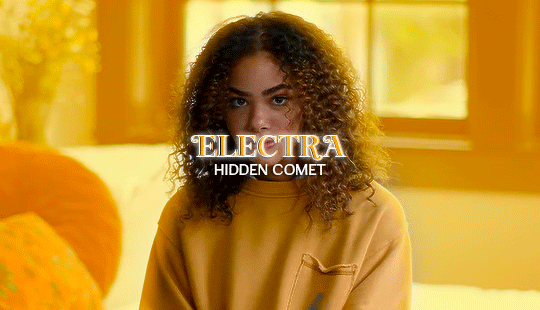



STARMAP OF MUSES — santa guadalupe edition.
A starmap is a celestial map that gives the positions and magnitudes of the stars. They are used to identify and locate constellations, stars, nebulae, galaxies, and planets. Celestial maps have been used for human navigation since time immemorial.
(insp)
✦ FOLLOW THE STARMAP.
Tiago Henrique McGowan is Fùěr (also known as Sigma Tauri) meaning Whisper, because this star is marking itself and stands alone in the Whisper asterism of the Net mansion. The Net mansion is one of the western mansions of the White Tiger, his representative animal.
Marcos Gabriel dos Santos is Sabik (also known Eta Ophiuchi), from the Arabic السابق al-sābiq "the preceding one". He's the love Auramere that came right before Tiago.
Helena Mariano is Antares (also known as Alpha Scorpii) meaning "rival to-Ares". Antares is the brightest star in the constellation of Scorpius. She was Hippolyta, queen of the Amazons, until she found out about the Red Cult's true intention and fought against them.
Caetana Nascimento is Alkafzah (also known as Kappa Ursae Majoris), from the Arabic القفزة al-qafzah "the leap". She's the youngest of her friendgroup, and even when things are hard, she has a lot of faith that things will get better.
Brandon Mastriani is Achernar (also known as Alpha Eri) meaning "End of the River". Achernar is the brightest star in the constellation of Eridanus. Considering his presumed death and water deity, some part of his personality really did die. After his return, he connected with the air deity and became the eye of a storm above the river he once was.
Harriet Coleman is Electra (also known as 17 Tauri). Named after one of the seven Pleiades, Electra is also the designation of a comet. By way of explanation for the fact that only six of the seven stars in the constellation were readily visible, it was said that Electra, unable to behold the destruction of Troy, hid her eyes, or turned away; or, in another version, Electra, in mourning, let down her hair, and left her sisters altogether and became a "long haired star" (i.e. a "comet"). Harry has a lot of talents that she keeps hidden behind her "cool girl" mask.
Daniel Soares Prado is Aldebaran (also known as Alpha Tauri) meaning "the follower". The star comes right after the Pleiades cluster, and it's the brightest star in the constellation Taurus. Daniel follows truth wherever he goes, not caring about the consequences.
Bloom Seong is Mukokseong (also known as Alkaid, Eta Ursae Majoris and the Seventh Star of the Northern Dipper) meaning "the most corner star". Alkaid derives from the Arabic phrase meaning "The leader of the daughters of the bier", also known as the mourning maidens. By being the seventh and youngest sacred flame priestess at her temple, she is represented by this star.
Elisa Topaz is Meissa (also known as Lambda Orionis) meaning "the shining one". She's the youngest of her friend group and her energized personality is represented by this star.
#stlupedit#✱ edits.#‹ universe › ━━━━ santa guadalupe.#✦ whisper of the tiger ›› tiago henrique mcgowan.#✦ the preceding one ›› gabriel dos santos.#✦ the vermillion star ›› helena mariano.#✦ leap of faith ›› caetana nascimento de castro.#✦ end of the river ›› brandon mastriani.#✦ eye of the storm ›› brandon mastriani.#✦ hidden comet ›› harry coleman.#✦ follower of the pleiades ›› daniel soares prado.#✦ priestess of the sacred flame ›› bloom seong.#✦ the shining one ›› elisa topaz.
2 notes
·
View notes